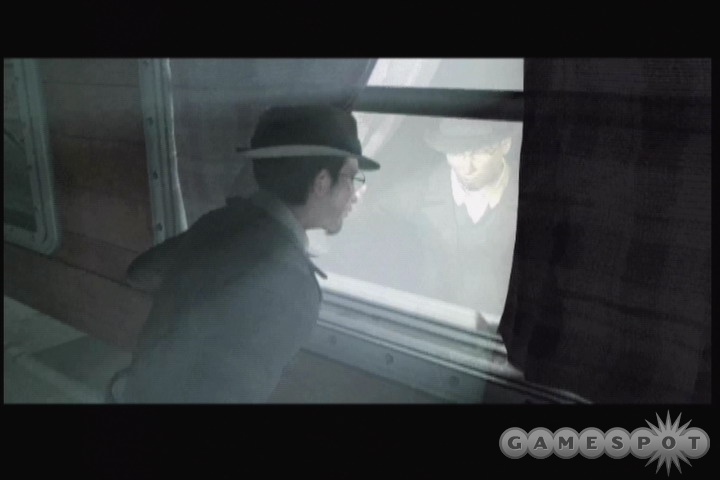This shouldn't come as much of a surprise, seeing how the game is published by the appropriately named Adventure Company, but Still Life is an adventure game tailored to the specific needs of established adventure game fans. Think back to good old Gabriel Knight (if the name means anything to you) and you're pretty close to the style and tone that Still Life aims for. Its slavish dedication to convention will scratch the methodical, cerebral itch all diehard adventure game fans have. As a genre exercise, though, it exerts little energy to draw in new players.

Still Life revolves around the brutal serial murders of prostitutes in two different cities during different eras. You start the game in modern-day Chicago as FBI field agent Victoria McPherson, who is young and darkly energetic, with a certain disaffected cool and penchant for crackin' wise that is almost a mandatory trait for adventure game protagonists. Victoria's inability to stop the killer starts getting the better of her, and she finds herself collecting her thoughts while sifting through her dead grandfather's belongings in her childhood home. This brings us to Gustav McPherson, Victoria's grandfather, who is a private detective in Prague in the late 1920s. Gus is more personally haunted by his case than Victoria, and the story arc in Prague carries more weight and feels creepier because of his emotional involvement.
The game cuts back and forth between the two stories, treating the murders in both eras with the same grim professionalism of a forensic procedural like CSI, though with less flash and thicker atmosphere. The biting cold of Chicago in the winter is nearly palpable, and it is reinforced by the sagging structures of abandoned buildings and empty municipal offices. The game does an equally good job of presenting the aged feel of Prague, with crumbling old-world architecture, murky waters, and some heavy fog effects.
It's the atmosphere that carries the experience in Still Life, so it's unfortunate that the mood is undermined by clunky visuals. The characters themselves look fine when they're standing still, but they move rather mechanically and have awkward mouth animations that make them look like ventriloquists' dummies. More care was taken with the backdrops, which are all prerendered, but much of the detail and overall fidelity is lost to what appears to be overzealous image compression. You don't really get a sense of the scale of either of the cities, and each location you visit feels less like a place firmly rooted in reality and more like a painstakingly arranged set.
This sense of disconnection is more pronounced in the Xbox version than in the PC version. This is largely due to the tiny load times that occur every time you shift from one screen to another. Most of the time these loads take less than a second, which doesn't seem like much, but it's like death by paper cut; it adds up over time. Additionally, the Xbox's lower resolution can make some of the puzzles, which rely on more subtle visual clues, frustrating. Still Life was designed with the PC in mind, and that's the platform this game is best suited for.
The whole game goes about its business with a certain efficiency, giving room for enough expository and incidental dialogue for the benefit of the mood and the narrative, but rarely dawdling. All of the dialogue is spoken, usually with detectable traces of Canadian mannerisms. It's not too bad during the parts of the story set in Chicago, but when you're chatting up Turkish beat cops who sound like they grew up in Ottawa, it's distracting and breaks the mood. But aside from the occasionally mismatched accents and some odd inflections, the voice acting is competent. Nice background music further complements the game's mood, and it ranges from a jarringly schizophrenic industrial theme to a more low-key noir vibe.

Most of the interaction you have with other characters is in service of the game's puzzles, which are all pure boilerplate adventure game fodder. You'll have to scour environments for items to combine, play around with a variety of sliding panels, dabble in some featherweight cryptology--and yes, boxes will be pushed. Despite the constant sense of déjà vu brought on by these familiar puzzle types, they work within the context of the game more often than not. The puzzles are usually spelled out pretty clearly, cutting out some of the frustration brought on by the deliberate vagueness that passes for challenge in so many adventure games. This isn't to say there won't be times in Still Life when you'll find yourself wandering around three or four rooms, unsure of what it is you're not seeing, but a dash of perseverance is all you need to solve even the game's most challenging puzzles.
The amount of time it'll take you to solve the murder mysteries of Still Life will hinge on how many snags you hit while solving puzzles, or how willing you are to fall back on walk-throughs. Either way, though, it's a pretty brief experience that doesn't lend itself to multiple plays. Adventure game fans will be more willing to forgive the game's technical shortcomings than anyone else, but it's hard to believe that devotees of this style of gaming will find much in Still Life that they haven't experienced already.